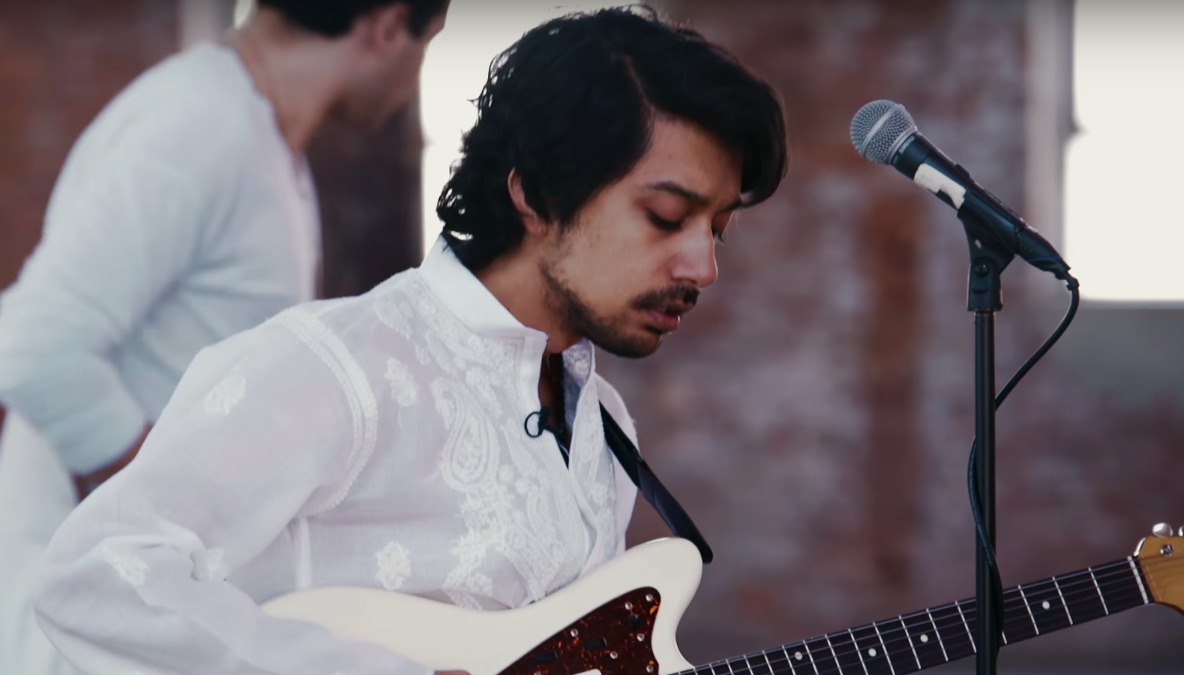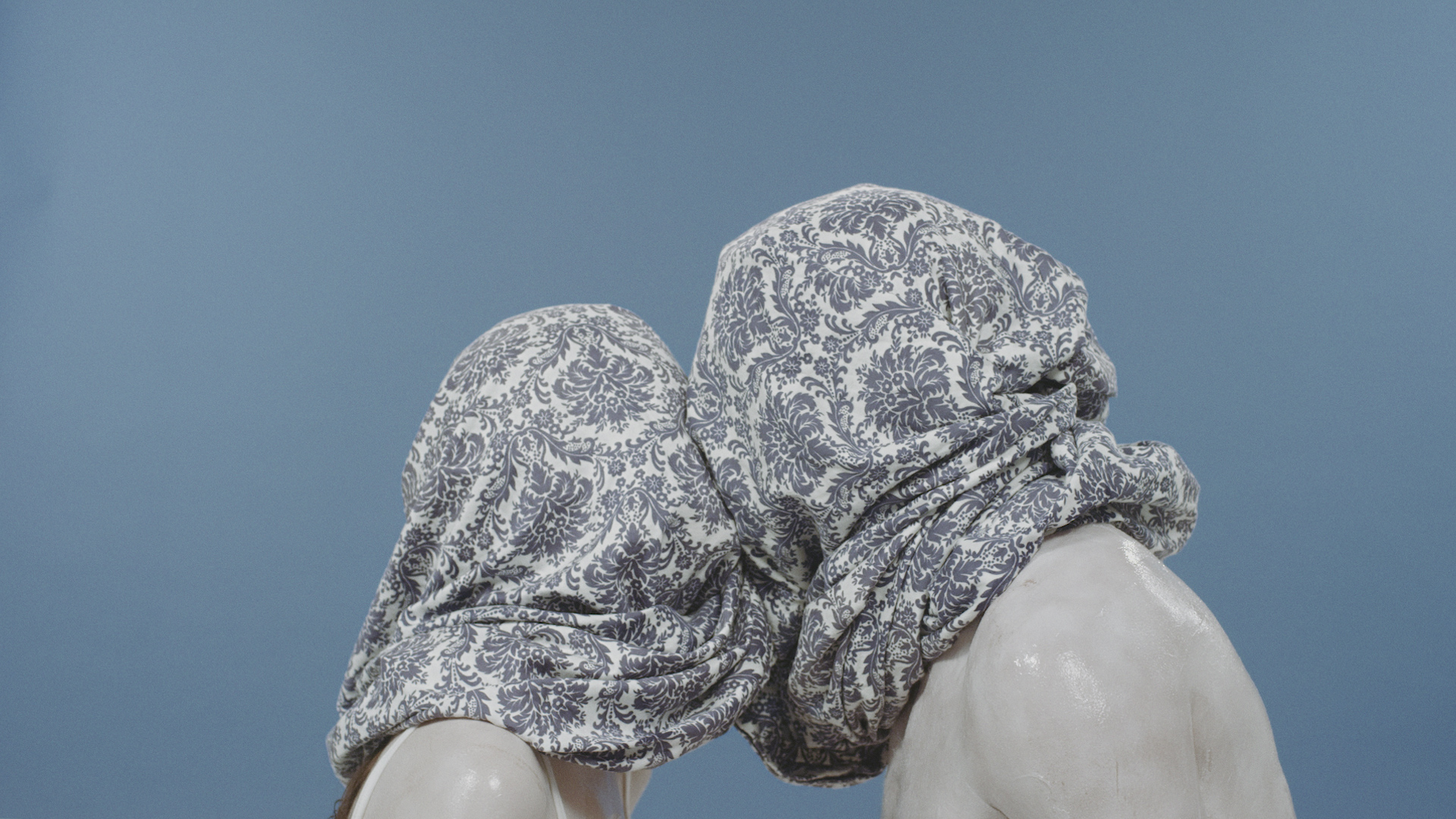There is an enduring belief, best expressed by American film editor Walter Murch, that it is frequently at the edges of things where we learn most about the middle. Murch’s edits prioritize emotional rhythm, often using jump cuts and non-diegetic sound to emphasize certain ideas over others: Think back to the whipping helicopters that open Apocalypse Now over the sound of The Doors’ “The End,” or the pangs of silence that break up Caravaggio’s torture scene in The English Patient.
Last year, when musician and archivist Zain Alam was at an artist residency in Miami, he slept with Murch’s editing guidebook on his nightstand. “I learned that there’s great power in following your gut,” he says. “I’m less interested in … ‘unity’ or ‘coherence’ than I am in finding some space that instinctually feels both my own and open to others.” At the time, Alam—who performs as the recording project Humeysha—was finishing up a video for his newest song, “Black Brown Gold,” which comes out today and teases his second album, Departures.
Alam is primarily a musician, but his work draws from a range of influences, from My Bloody Valentine, to the cinematic extravagance of Bollywood, to the gyrating percussions of Qawwali, a genre of devotional Sufi music known for its rhythm and lyricism. The result is a refined family of sounds that braids South Asian soundscapes into a distinctive flavor of spacious psych-pop, all built atop archival recordings that Alam collected on multiple trips he took to India and Pakistan as an oral archivist for the 1947 Partition Archive.
Alam’s syncretic approach allows him to compress his library of found sounds against a backdrop of lush vocals and soaring guitar work. Connections that one might consider geographically and genealogically distant, in Alam’s hands, come together as a striking palette. Alam wrote Humeysha’s self-titled debut while traveling through India, in the two years after he graduated from Wesleyan University in 2013, releasing Humeysha in October of 2015.
In “For Love, From the Law,” which opens the first album, a blend of shimmery brass dancing bells and tablas plays against the metronomic clacking of prayer cymbals. The sound of Alam’s Fender Jazzmaster guitar floats above the layered arrangement, producing a sense of lightness characteristic of much of Humeysha’s music—a halfway point between Indian rock and indie rock. In “Burma Between You and Me,” Alam croons atop a tricky Qawwali loop in Hindi, Urdu, and English. “Loop Across Borders” ( the album’s shortest track, but a personal favorite) came from a field recording in Lucknow, India, where Alam plucks his guitar strings alongside a distant chorus of chirping birds.
Though he grew up in a Muslim-American family in Kennesaw, Georgia, Alam’s relationship to his family’s history with the Indian Partition only really took shape when he first traveled East. “I use the word ‘diasporic’ in reference to Humeysha’s sound because of how closely it gets to my process of music-making,” Alam tells me. “There are words and sounds dispersed across Hindi-Urdu and English, India and New York City, past and present that I gravitate toward.”
During his time in South Asia, between graduating from Wesleyan and mastering Humeysha’s debut with his friend and collaborator Dylan Bostick, Alam spent months speaking with over a hundred Partition survivors—Hindus and Muslims who, by sharing their personal accounts of displacement, were also actively remaking them. The ethnographic work left a lasting impact on him, as he began spotting sonic relations between India and the United States. “I could hear continuities in places that aren’t speaking the same language, even though they are not necessarily conversing,” he says. “The way a guitar in open tuning sounds … almost like an Indian-style drone instrument.”
On returning to America, and in the time since, Alam has sharpened his knack for finding continuities in contrasting sounds with help from a circle of collaborators and mentors, such as Queens rapper Heems, who draws from South Asian musical influences in his production as well (and is also a Wesleyan graduate).
“The sampled tap of a tabla or ring of a meditation bell infuses the music with a texture and grit that no synthesizer can provide,” Alam says. “Letting sounds be—especially old sounds—without rushing in to label or edit anything, is part of the initial investment needed to know what they truly are. There’s magic in the past and a wonderful alchemy to playing with what you’ve been given.”

In Alam’s vision, Humeysha is more than just the music, though the music has always been the project’s glue. “The band was formed after the release of the [2015] album, in order to play it live,” he says. Over the last few years, and with help from variety of grants and artist residencies, Alam has also been able to reimagine the ways his performances happen in physical space. During live shows, Alam comes on stage against a glaring ocean of moving projections, clad in a white kurta that absorbs every color thrown at it. The kurta, a plain and loose garment embroidered with light floral patterning, accentuates Alam’s dark facial features: flowing black hair, a beard that thickens toward the center of his face, and, sometimes, black eyeliner.

(Photo: Humeysha/YouTube)
The white kurta defines Humeysha’s visual language, and, wearing it, Alam emerges almost as a caricature of himself, walking across the screen in music videos and into his performances and installations like a ghost, jumping between his project’s many iterations.
This brings us back to the video for “Black Brown Gold,” where we find Alam in a similar avatar. When they shot the video, he was living between downtown Miami and the neglected neighborhood of Overtown, where he could see the city transform from block to block. “I was thinking about how American cities are catacombs in which we’ve been trained to see no further than thin, glittering surfaces,” Alam says. The video reflects Miami through the grotesque imagery used by Alam’s friend and filmmaking collaborator Ethan Young, but it’s Alam at the video’s center, as he wanders between Miami’s underbelly and his own haunting inner life.
“I try not to work too directly in the realm of symbolism … but there was some real connective tissue between these visual themes of vulnerability, liminal states, and the loss of control over your body,” Young tells me. As the background percussions soften, Alam can be heard singing an untranslated version of poet Muhammad Iqbal’s “Shikwa,” a poem in Urdu written to echo Milton’s Paradise Lost: “We wandered with Your message in the mountains, in the deserts. And do You know whether we ever returned unsuccessful?”

World music occupies a precarious postcolonial space. While the mainstreaming of Afro-Caribbean, and to a degree of South and East Asian, musical traditions has helped challenge the cultural hegemony of Western music worldwide, globalization and the growth of sampling technologies have also ushered in a period of frenzied borrowing—and often what some would call theft—whereby historical context takes a backseat to melody. Alam is a strong advocate for resynthesizing new sounds from old traditions, but not without drawing clear ethical lines between forms of appropriation and those of meaningful and productive assembly. “It’s important to be invested in the culture you’re working with, not just pick and choose like a cultural tourist when you build sounds,” he says.

(Photo: Humeysha)
Alam’s experiences in Wesleyan’s music scene, on the streets of India and Pakistan, and in residencies across the country have helped him group a constellation of ideas and formal techniques into Humeysha, a project that seems to be only expanding in scope, and in the ways it tests traditional ideas of authenticity, inheritance, cultural preservation, and musical innovation.
“I’m invested in making art that points toward the rich phenomenon of how language, aesthetics, and ways of being can be turned through the immigrant experience,” Alam says. “And what responsibilities rest upon those of us who chose to engage creatively with cultures we have access to, not only through inheritance but also [through] some degree of study, grappling, and re-making.”
In both Hindi and Urdu, Humeysha translates to “forever,” or “always,” depending on context. The ambiguity is useful for a project that is at once fresh and innovative in its approach while remaining timeless in its themes: the feeling that, wherever you are, you could be anywhere.
“The feeling that you belong by hearing a voice that’s found home with itself, even if it’s one you do not understand or encounter for the first time—that’s it,” Alam tells me. “That’s what it’s all about.”




